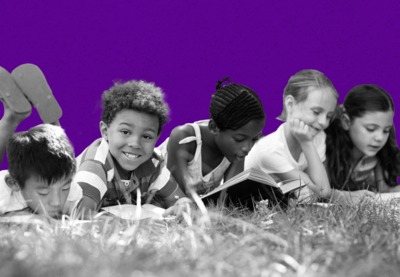Conversations about commonalities across cultures can help children build empathy and understand identity and diversity. This learning journey is designed from a previously published article and offers conversation points and activities for children and families.
Identity and Commonalities
To set the stage for discussing diverse cultures, help children develop a strong sense of self and identity while recognizing and honoring diversity in the world. Emphasize that our differences make us special, and the world is better when we embrace our diversity. Because we are different, we find space for new thoughts and ideas and opportunities to appreciate diverse ways of being and living.
Our similarities allow us to connect as families, friends and communities. These similarities are recognized in various ways. Many people who seem very different share many similarities. Our differences should not keep us from also finding our similarities.
Emphasize that we have multiple identities. We are sometimes known by our race and the color of our skin, or by our gender, our family names, or even the groups and clubs we belong to. It’s OK to be proud of our many identities. It is not OK to hurt others because of their identities.
Encourage and support children to express pride, confidence and healthy self-esteem without denying the value and dignity of other people.
Growing Together
Creative activities foster learning in families—or community learning centers—and can be fun and educational. These activities are not meant as assignments for children but ideas for parents, caregivers and children to do together.
1. Me, Inside and Out
Consider using this art and writing project as a starting point. Children can draw a picture of themselves and surround their images with words to add their physical descriptions. They can then add more details about who they are, their emotions, how they see themselves. And then in an outer circle they can layer words that reflect aspects of their home culture.
Parents and caregivers can help children complete their vision of who they are in the world. For example, if the child is not a strong writer yet, let them tell you their thoughts and words, and you can write for them. Help children explore their own identities and identify parts of their lives that constitute their home culture.
2. Showcase of Self
Similar to the self-exploration activity above, have children create a collage of all things that represent them. Use this as a way to be introduced to new interests. Children should be proud of who they are and able to share all their identities—including their likes and dislikes—that make them special. Use this activity as a celebration of self. Begin helping children shape and share their multiple identities.
3. Getting to Know Each Other Ornaments
Discuss with children the ways you are similar and ways you are different. Then create a Venn diagram ornament by drawing two circles that overlap in the center. Write your names in the outside circles. Under your names list your differences (add additional overlapping circles for multiple children). Example: Mom likes green beans, Jamie likes broccoli. Where the circles overlap, list your similarities. Example: Mom and Jamie both like dancing in the rain.
Cut out the joining circles. Place a small hole at the top of the cutout and thread a string through the hole to create a loop for hanging. Hang the ornament as a reminder of your similarities and differences.
Encourage children to continue this activity with others who they may think they have nothing in common with and those with whom they think they have a lot in common. They can start creating multiple ornaments as they learn more about other children and trusted adults. You may also complete this activity based on what children share about what they have learned about other children from school or community interactions. Use this activity to introduce how the differences and similarities on the created ornaments are equally important.
4. Family Meals
Create new stories or share existing stories about the meals you eat as a family. Talk about the importance of each meal for your family. Who introduced the meal to you? How did you learn to cook it? How often do you eat this meal and why?
Then begin to introduce meals from various cultures to your family. Later, host a family potluck with other families. Have each family bring a dish and showcase how the dish is significant to their family. Discuss how the foods we eat also represent who we are.
5. Celebrate Your Cultural Identity
Imagine that you are introducing a cultural trait—a physical feature, a custom, a bit of family history, personal ties—to a friend. Write a story or poem or create an artwork to introduce that part of your identity. What do you remember about "it" and its role in your life? Describe your feelings. What would you hope your friend would do in knowing about this part of your identity?



